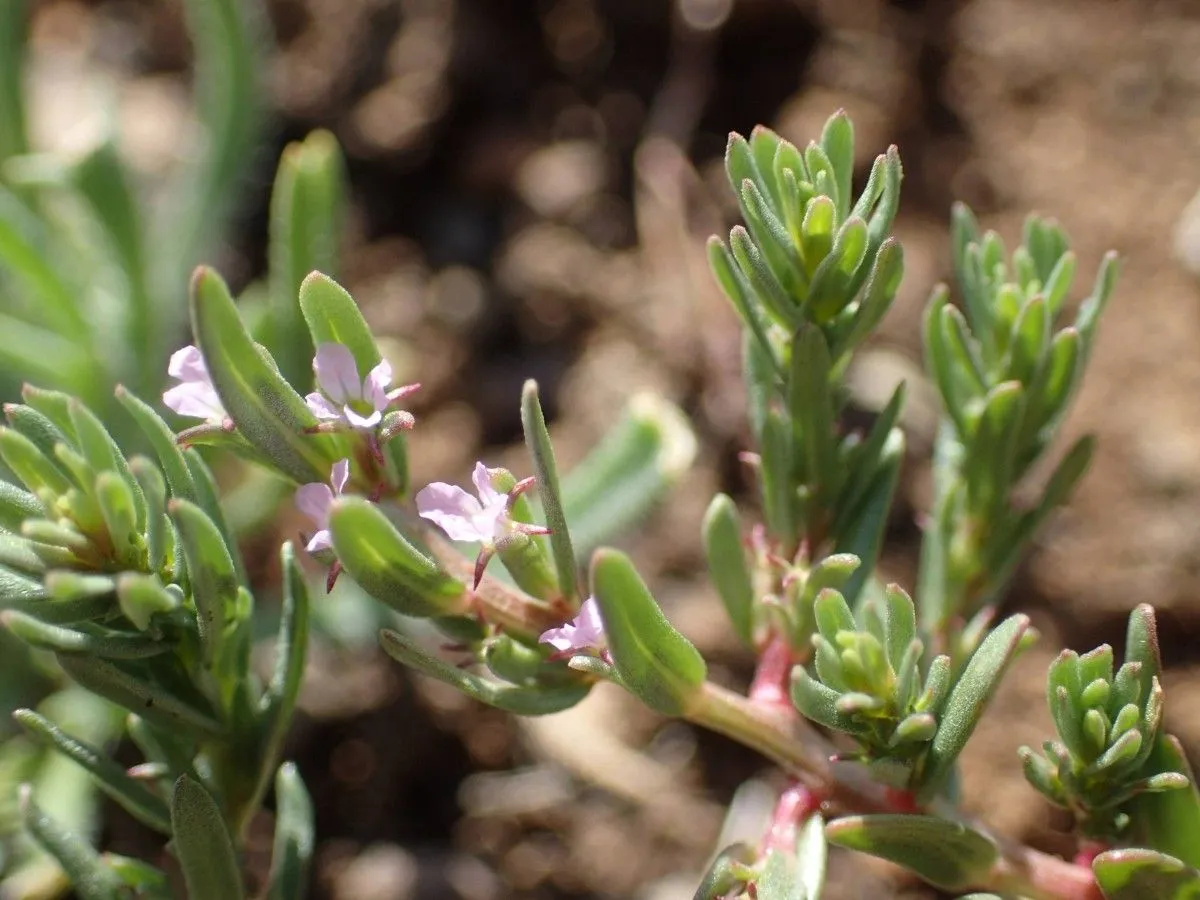
Author: L.
Bibliography: Sp. Pl.: 447 (1753)
Year: 1753
Status: accepted
Rank: species
Genus: Lythrum
Vegetable: False
Observations: Medit. to C. Asia and Iran
Thymeleaf loosestrife, scientifically known as Lythrum thymifolia, is a captivating herbaceous plant that belongs to the family Lythraceae. Initially documented in 1753 by the botanist Carl Linnaeus in the seminal work, “Species Plantarum,” this plant has garnered attention for its distinctive characteristics and widespread distribution.
Native to the Mediterranean region, Central Asia, and Iran, Thymeleaf loosestrife thrives in diverse climatic conditions ranging from temperate to subtropical zones. Its growth habit is typically bushy, with slender stems that bear petite, thyme-like leaves—hence its common name. The foliage is not only aesthetically pleasing but also serves as a reminder of the plant’s adaptability to various environments.
The flowers of Lythrum thymifolia are particularly notable. They exhibit a beautiful blend of pink to purple hues, making the plant a striking addition to natural landscapes and cultivated gardens alike. Blooming typically in the summer months, these flowers attract a variety of pollinators, including bees and butterflies, which further aids in the ecological balance of their native habitats.
In terms of utility, Thymeleaf loosestrife has been studied for its potential medicinal properties, commonly utilized in traditional remedies throughout its native regions. The plant’s resilience and ability to flourish in different soil types and moisture levels highlight its versatility and ecological significance.
Whether appreciated for its ornamental beauty, ecological contributions, or historical botanical importance, Thymeleaf loosestrife continues to be a subject of interest among botanists and plant enthusiasts around the world.
Eng: thymeleaf loosestrife
Swe: barrfackelblomster
Tur: kaba aklarotu
Fra: lythrum à feuilles de thym
Ita: salcerella con foglie di timo
Por: salicaria menor
En: Thymeleaf loosestrife
Fi: Neulasrantakukka
Fr: Lythrum à Feuilles de Thym
It: Salcerella con foglie di Timo
Pt: Salicaria Menor
Sv: Barrfackelblomster
Tr: Kaba aklarotu
Taken Jul 13, 2008 by EOL − O. Delzons (cc-by-nc-sa)
Taken May 5, 2019 by Tela Botanica − Sylvain Piry (cc-by-sa)
Taken May 5, 2019 by Tela Botanica − Sylvain Piry (cc-by-sa)
Taken May 5, 2019 by Tela Botanica − Sylvain Piry (cc-by-sa)
Taken May 5, 2019 by Tela Botanica − Sylvain Piry (cc-by-sa)
Taken May 5, 2019 by Tela Botanica − Sylvain Piry (cc-by-sa)
© copyright of the Board of Trustees of the Royal Botanic Gardens, Kew.
© copyright of the Board of Trustees of the Royal Botanic Gardens, Kew.
© copyright of the Board of Trustees of the Royal Botanic Gardens, Kew.
Growth habit>: Forb/herb
Family: Myrtaceae Author: (F.Muell.) K.D.Hill & L.A.S.Johnson Bibliography: Telopea 6: 402 (1995) Year: 1995 Status:…
Family: Rubiaceae Author: Pierre ex A.Froehner Bibliography: Notizbl. Bot. Gart. Berlin-Dahlem 1: 237 (1897) Year:…
Family: Sapindaceae Author: Koidz. Bibliography: J. Coll. Sci. Imp. Univ. Tokyo 32(1): 38 (1911) Year:…
Family: Asteraceae Author: A.Gray Bibliography: Pacif. Railr. Rep.: 107 (1857) Year: 1857 Status: accepted Rank:…
Family: Fabaceae Author: Medik. Bibliography: Vorles. Churpfälz. Phys.-Ökon. Ges. 2: 398 (1787) Year: 1787 Status:…
Family: Aspleniaceae Author: (Cav.) Alston Bibliography: Bull. Misc. Inform. Kew 1932: 309 (1932) Year: 1932…